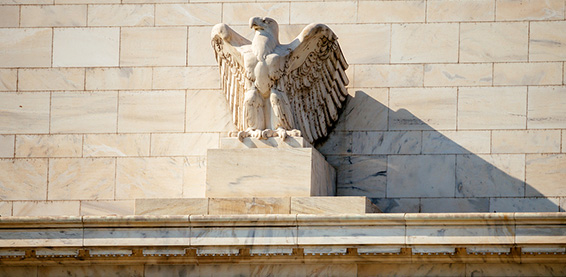
The Federal Reserve and the price of gold have been dancing a rather brisk foxtrot in the past six months based on rampant speculation that the Fed will raise interest rates on the dollar in the near future. While the Fed hasn’t come out and confirmed this policy, the ultra-low lending rates that helped to pull the US out of the Great Recession appear no longer necessary as economic indicators like unemployment and the S+P 500 have improved. A Wall Street Journal survey revealed that most economists agree the Fed will raise interest rates later in autumn, most likely come September. Why does this big decision mean so much for gold?
Monetary Policy
The availability of money in any nation with a central banking system (such as the US, EU, Japan, etc.) depends on the rates by which the government’s central bank changes interest for the loan. For the past half decade, the US government has been more than willing to give away its currency to banks nearly for free in order to stimulate both lending and spending. This has created a decent amount of economic stimulus but has also developed an aversion to purchasing US Treasury bonds, which sit at less than 2% interest today and represent a particularly poor mechanism of investment. The US needs interest rates to rise in order to avoid a situation like that of Japan, which has seen interest rates steadily decline for the past decade and dried up the government’s ability to lend money.
Gold and Inflation
A surge in interest rates almost always means a surge in demand for gold. Since gold adheres to the value of supply and demand rather than the value of a central bank, it serves as an excellent investment mechanism in comparison to cash. While the $20 bill in your pocket is worth less tomorrow than it is today due to inflation, $20 worth of gold could rise in value as much as a few percentage points come tomorrow. Such was the case on June 17th, when gold spiked by nearly thirty dollars per ounce in the largest one-day gain of 2015 thanks to rumors that the Fed’s interest rate raise would come sooner than expected. More investors sought to put their money in gold rather than lose value in U.S. currency, a trend that occurs with each instance of a depreciating dollar.
Playing By Fed Rules
It’s not in the Fed’s interest to keep the price of gold high, even though the United States owns billions of dollars’ of gold in reserves. Rather, our central bank looks out for the dollar’s ability to compete with other currencies and to serve as a mechanism for government lending. The decision to raise interest rates, however, will be good news for gold investors come the autumn. Buying gold now while it stays below the $1,200 threshold could mean big returns once investors return to gold in a few months.


I like more info,on buying gold.